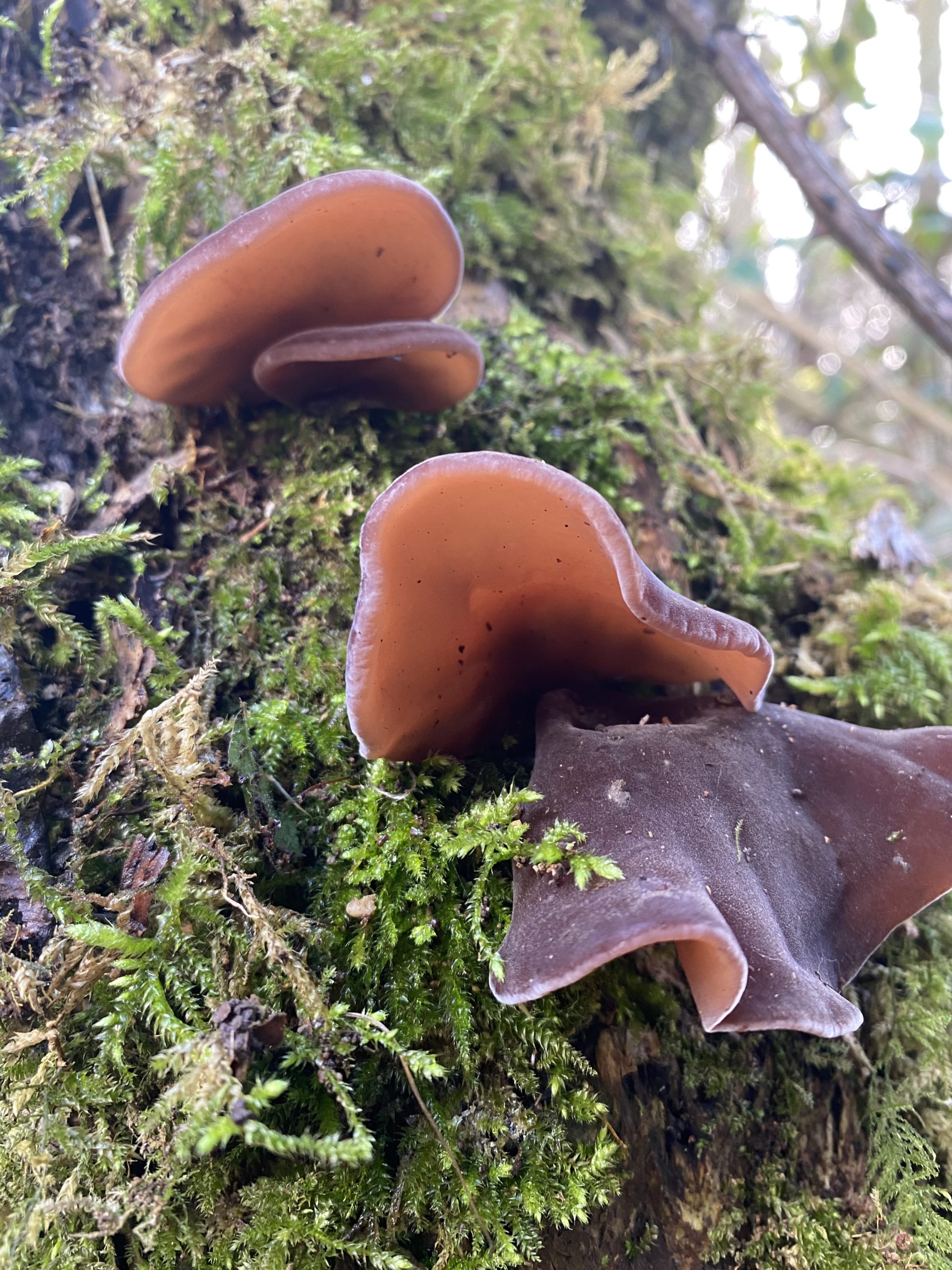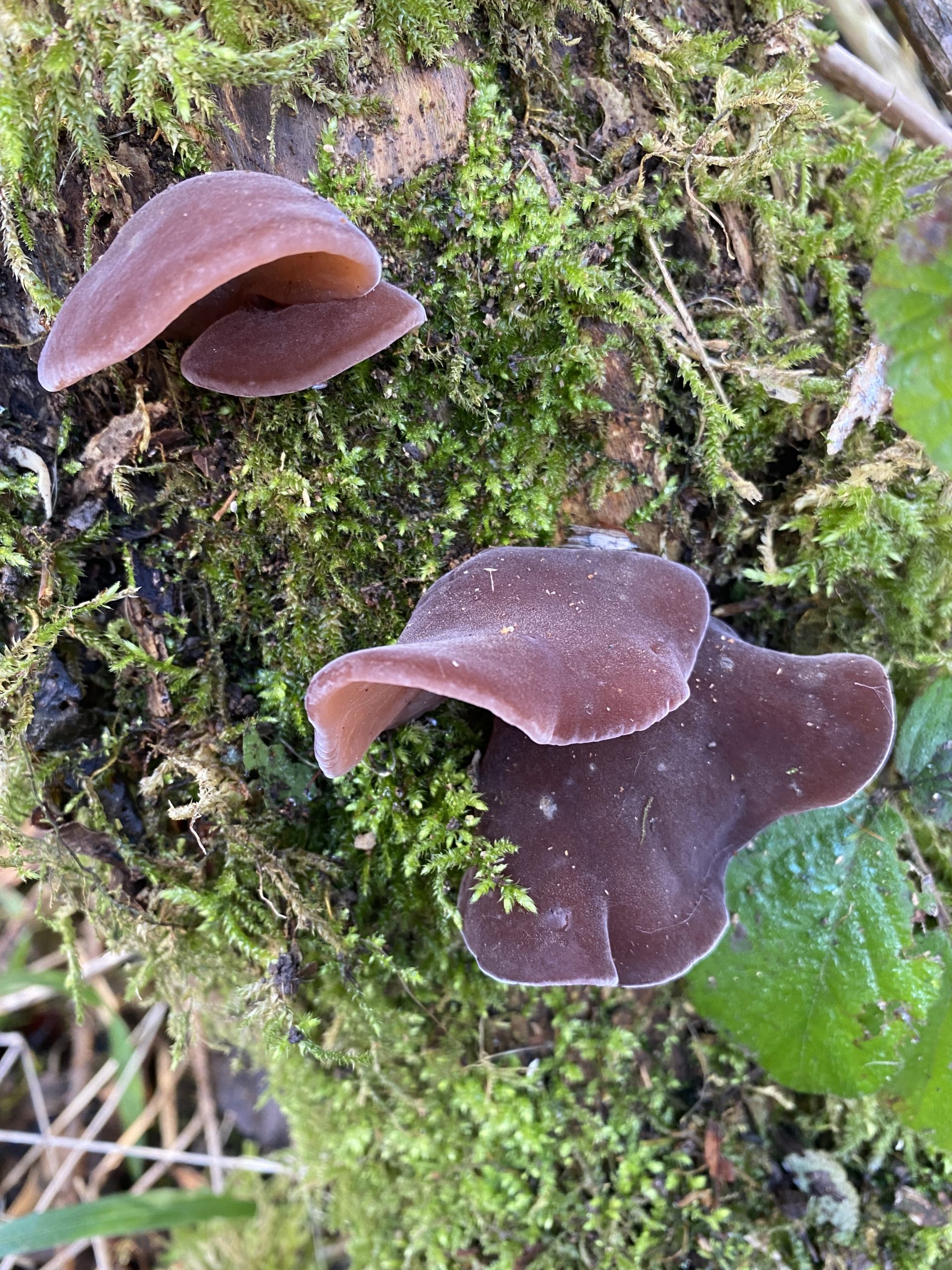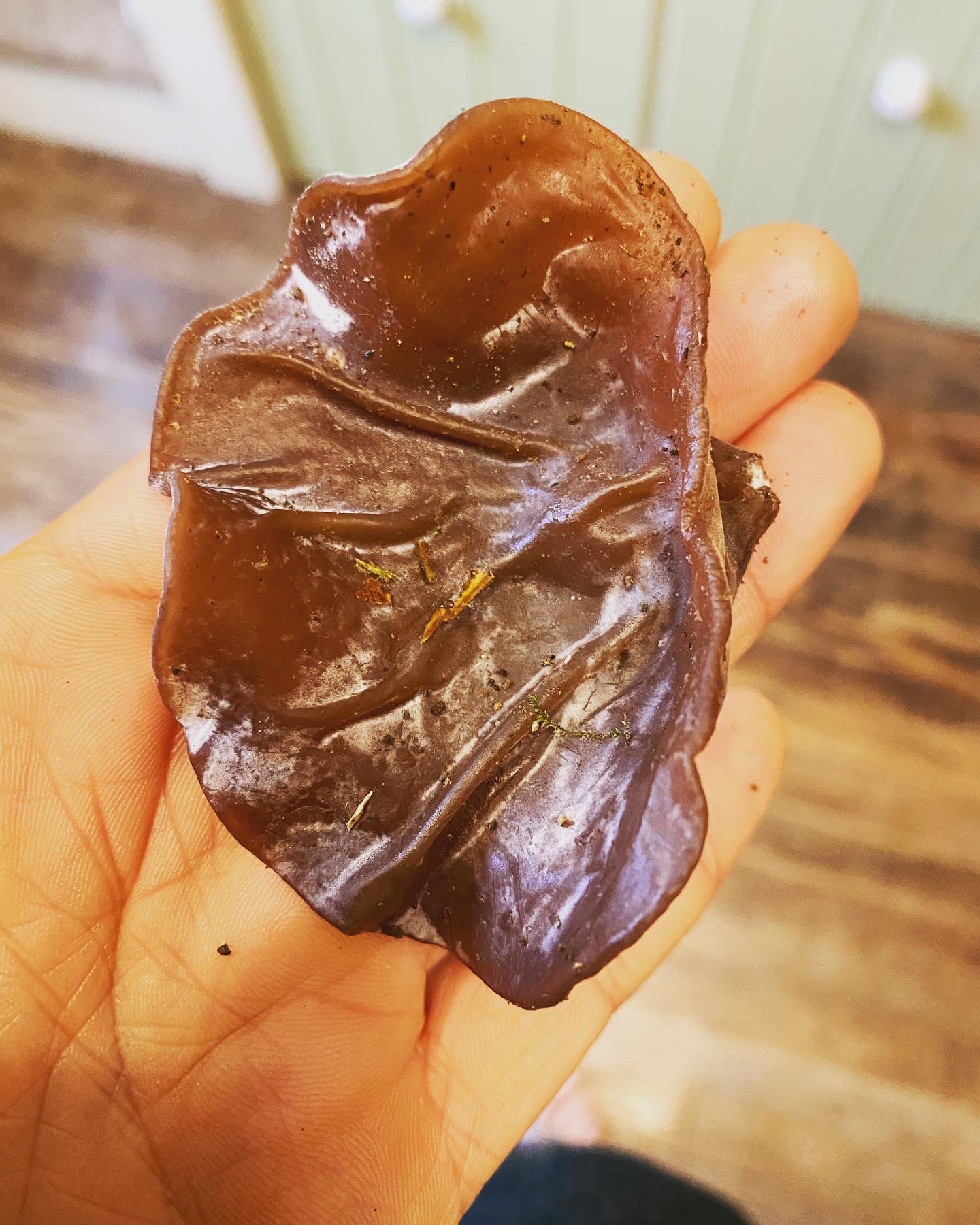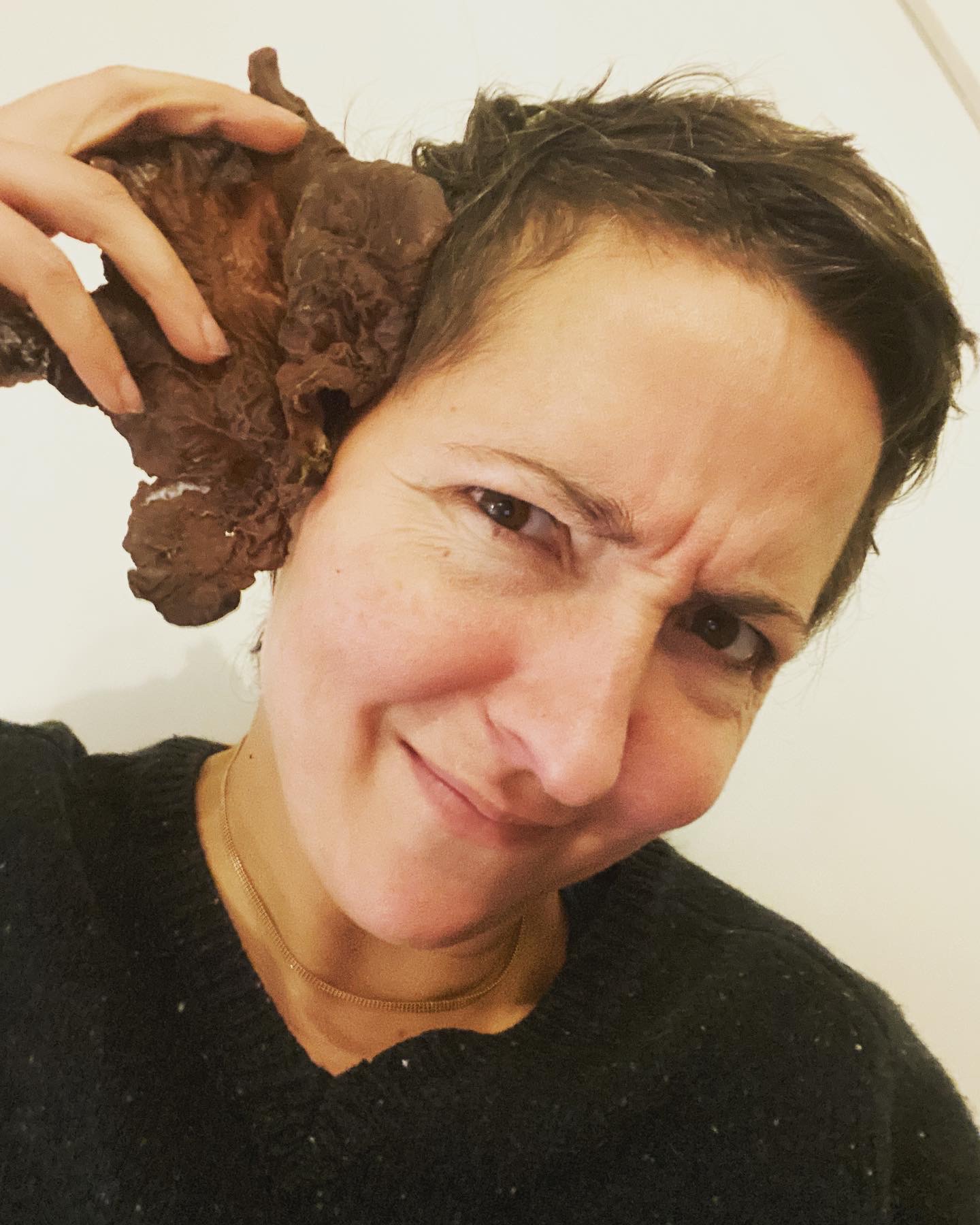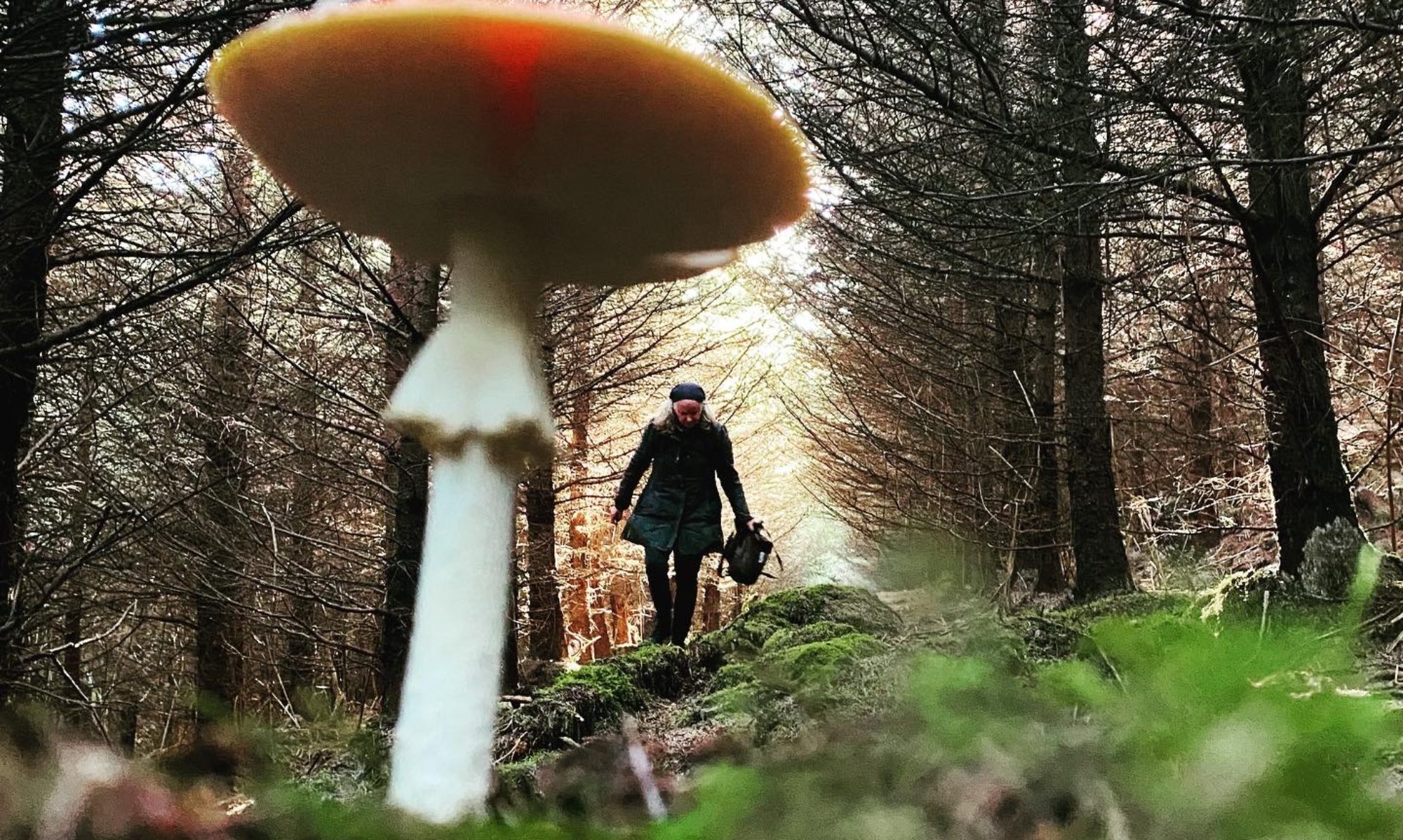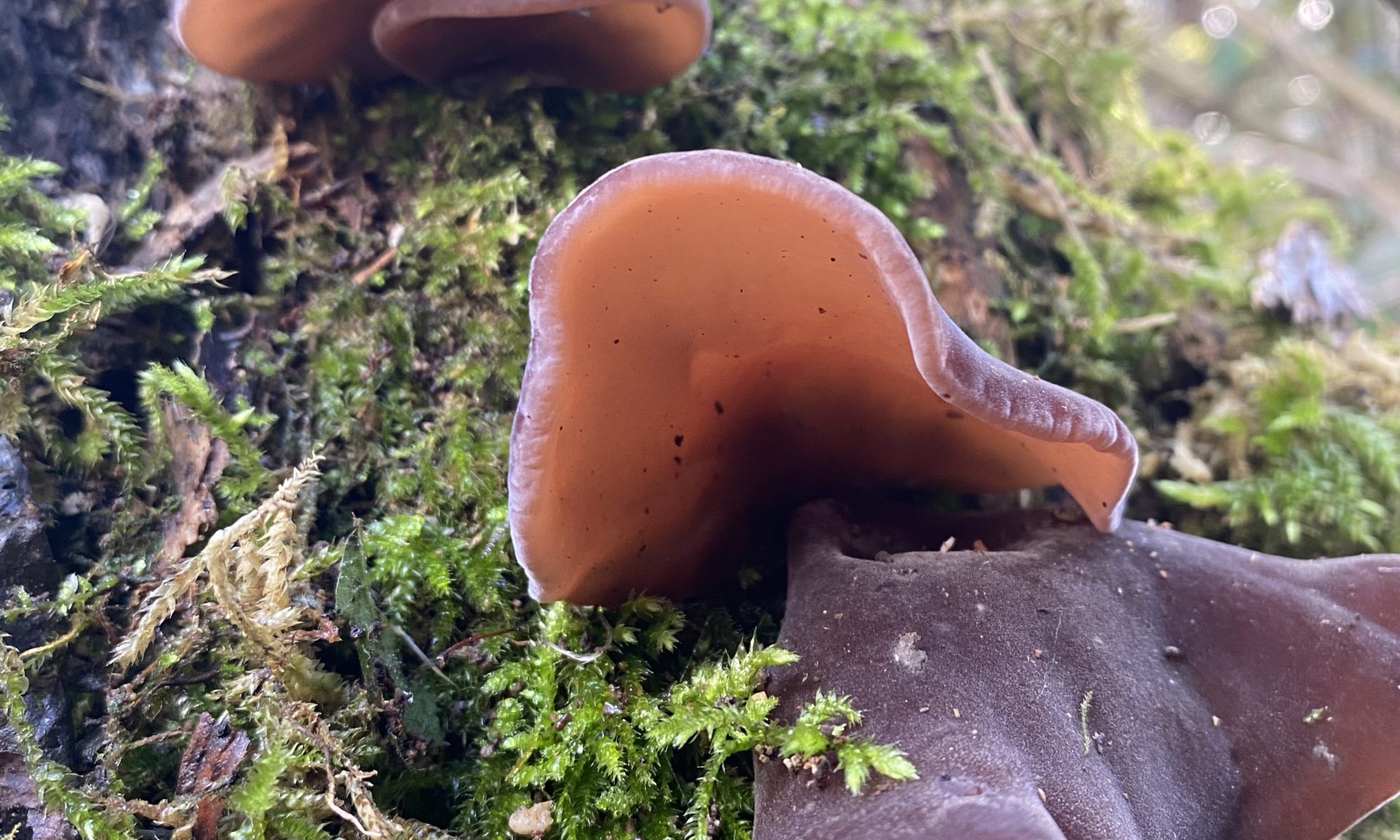Hmmmm? What’s that you say? Can’t hear you from my Jelly Ear!
(Even if it’s the biggest Jelly Ear I’ve ever spotted!)
These abundant, edible and medicinal fungi were a bit challenging to me before, I must admit.
The gelatinous texture isn’t one that I was accustomed to eating but it’s grown on me! The distinctly ear lobe shape didn’t help either. 😂
This mushroom can be found commonly growing on dead or dying Elder trees. Sometimes you can hit the jackpot and find branches heaving with them.
Another name for this fungus is Auricularia aurícula-judae, Wood Ear, Black fungus, Cloud Ear, Judas Ear or more controversially Jews Ear/ although this name is no longer recommended.
These can be harvested throughout the year, and can even be found shrivelled up on the tree after a dry spell. They dry down very small and rehydrate readily when needed. Love finding them plump and fat and juicy but you can collect the dried ones too, saving you the job of drying them out!
I harvest, clean, slice and dry these to preserve them for use throughout the year. Then rehydrate when needed.
If cooked fresh in a frying pan they can be quite explosive!
I enjoy them most sliced into a Chinese dumpling with other wild greens and aromatics.
Another favourite amongst the Foraging world was dreamt up by @fergustheforager many years ago and takes the intact dried jelly ears and rehydrates them into a liqueur then covers them in chocolate.
This mushroom has been used medicinally since the Tang Dynasty 618 BCE in China, often added to dishes to help improve breathing, sore throats, to reduce colds and fevers, to enhance well being and to boost circulation.
One to look out for on your wild food or herbal medicine journey.
#jellyearfungus #medicinalmushroom #foodasmedicine #fungi #fungus #forager #wildfood
